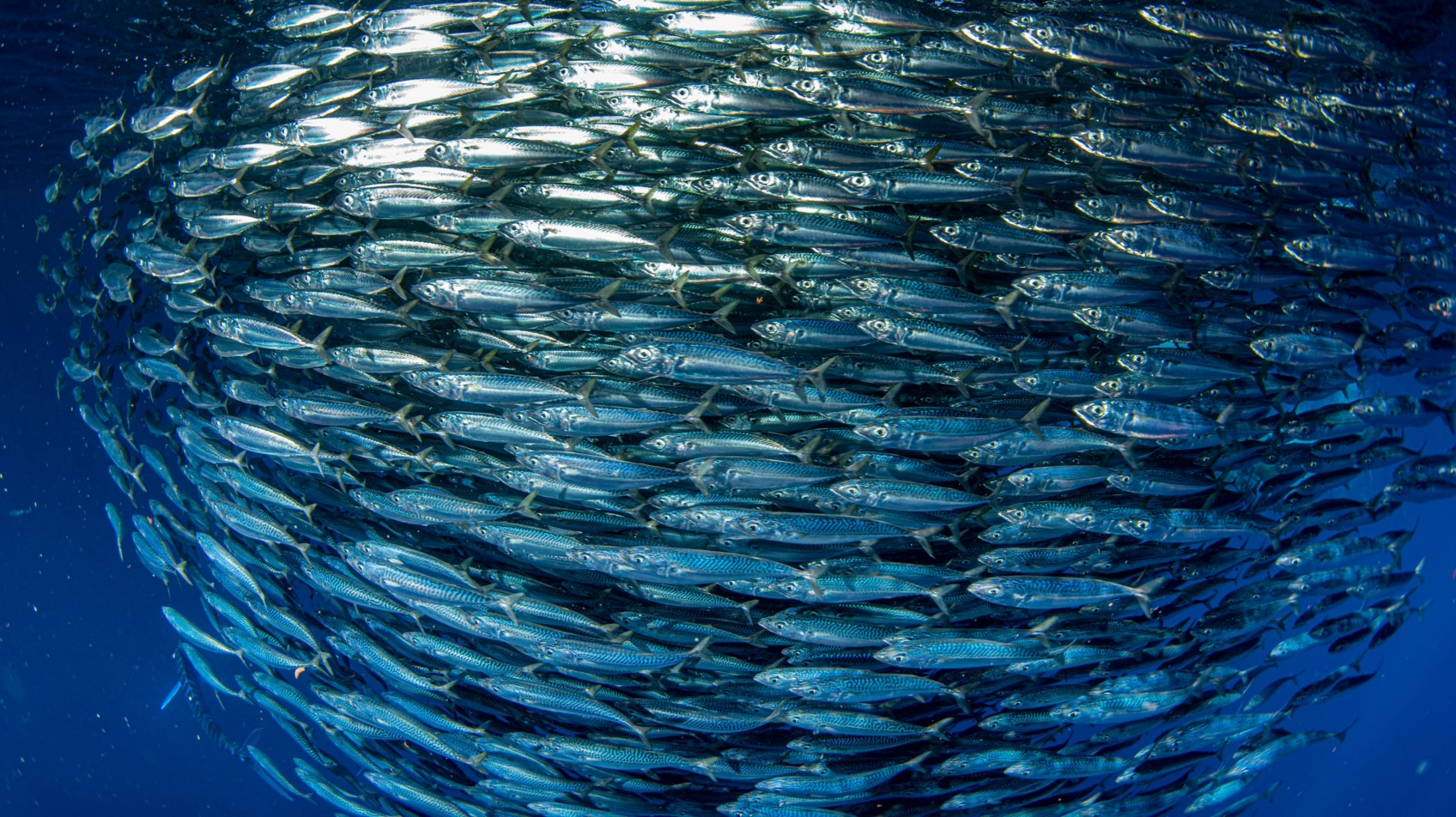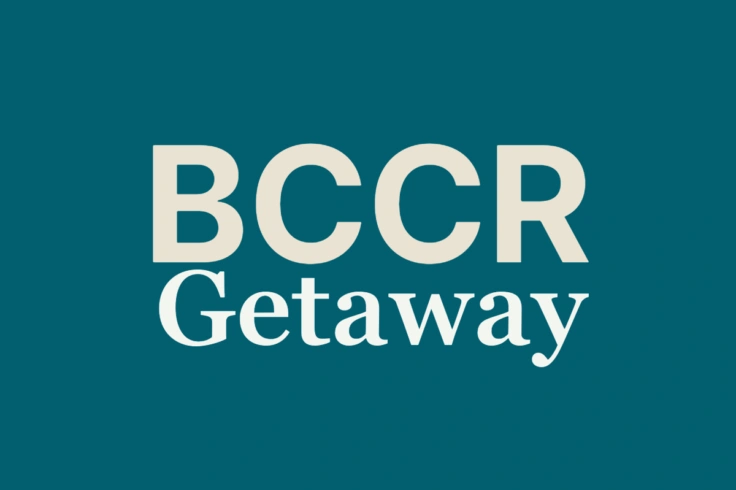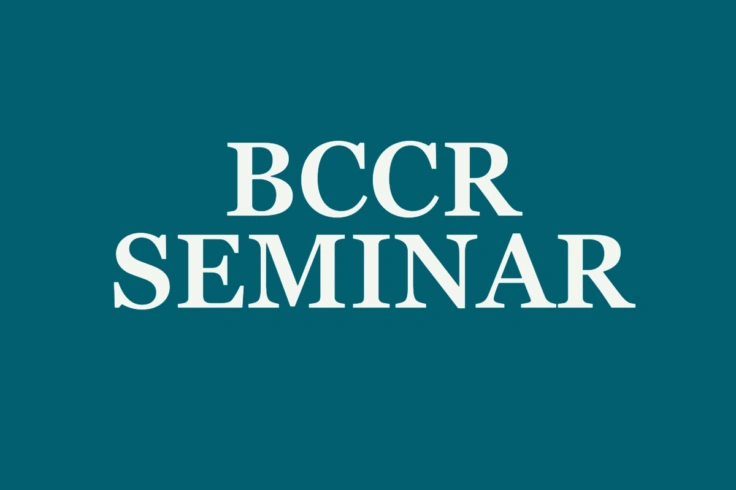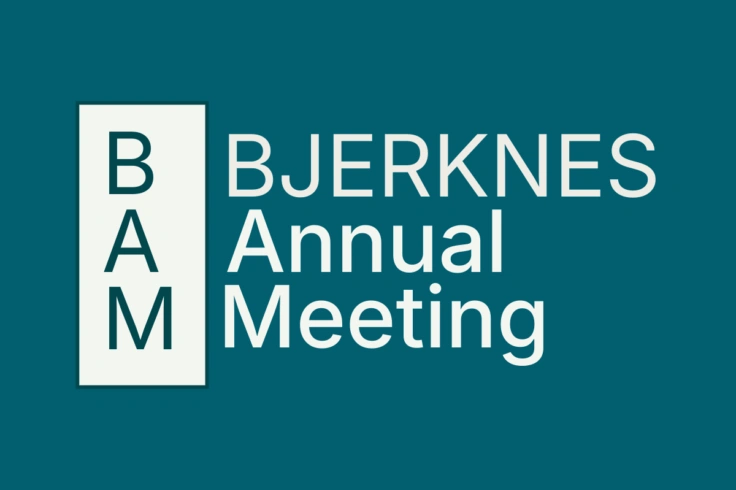
How El Niño and La Niña reach across the globe to impact fish populations thousands of kilometres away?
Read moreFind an Expert
Our researchers are employed either at NORCE, UiB, the Nansen Center or the Institute of Marine Research. The researchers work together across various scientific disciplines. Find researchers with backgrounds in meteorology, oceanography, geology, geophysics, biology and mathematics, among others.
Projects
Researchers at Bjerknes are involved in several projects, both nationally and internationally. The projects are owned by the partner institutions, with the exception of our strategic projects.
Publications
Researchers at the Bjerknes Center publish more than 200 scientific articles each year.
Calendar
See all
07.01.26
Bjerknes Getaway at Voss 7-9 January 2026
Bjerknes Getaway 2026 7-9th of January at Hotel Scandic Voss Wednesday 7. January 08:29–09:41 Train trip Bergen-Voss 10:15 Kikki Kleiven: Welcome to Voss and the Bjerknes Getaway. 10:20-11:20 Climate in Norway 2100: How did we produce the report? The county profile for Vestland and how Voss municipality plan for a changing climate. 11:20-14:30 Break for skiing or other activities (walk to Bordalsgjelet). 11:30 Lunch (Note: For those skiing and not joining lunch: bring your own packed lunch from home) 14:30 Gather for a musical surprise and the afternoon program. Our strategic projects 2022-2025 14:45-15:30 Climate change and sustainability in Norwegian fjords, CLIFORD How did it go? Short talks on challenges, results and the way forward. 15:30-16:00 Coffee break and check-in 16:00-16-:45 Dynamics of the North Atlantic Surface and Overturning Circulation, DYNASOR Short talks on the challenges, results, and the way forward. 16:45-17:30 The breathing Ocean (O2Ocean) Short talks on the challenges, results, and the way forward. 18:00 BarQuiz 19:00 Dinner Thursday 8. January 09:00-09:45 Proxy Assimilations for Reconstructing Climate and Improving Models (PARCIM) Short talks on the challenges, results, and the way forward. 09:45-10:30 Seal level Projection and Reconstruction unit (SEAPR) Short talks on the challenges, results, and the way forward. 10:30-11:00 Mental representations of “Science” by Steffen Wagner 11:00-14:00 Time off for skiing or other activities (walk to Bordalsgjelet) 11:30 Lunch 14:15 Coffee break 14:30-15:00 PIONEER by Margit Simon Machine Learning for increasing weather data resolution by Sigrid Passano Helland 1500-1730 Poster session starting with 1 minute poster pitch presentations. 17:30 The Bjerknes bowling tournament at Voss bowling 19:30 Dinner Friday 9. January 09:00-10:30 Summing up 2025. The research theme leaders and director’s 90 minutes Global by Stefan Sobolowski Highlight: Edson Silva Polar by Marius Årthun Highlight: Rebekka Frøystad Hazards by Stijn De Schepper Highlight by: Manuel Hempel Carbon by Nadine Goris Highlight: Jerry Tjiputra 10:30-11:00 Check out 11:00-11:30 What we do with AI and Machine learning by Stefan Sobolowski Planning for the years to come by Kikki Kleiven 11:30 Lunch 12:30-13:45 Group work Goodbye 14:07 – 15:24: Train leaves for Bergen

12.01.26
Sandy Thomalla - Do Small Scales Make a Big Difference? SOCCO's Journey in Building South African Southern Ocean Carbon-Climate Science
Abstract This talk shares SOCCO’s journey from a small South African research effort to a leading Southern Ocean carbon–climate programme. Through pioneering glider campaigns, remote sensing and high-resolution modelling, we show how fine-scale ocean dynamics shape the seasonal cycle, carbon flux variability and climate sensitivity—offering new insights and challenges for next-generation climate models. Speaker information Sandy Thomalla is a Chief Researcher at the CSIR and Research Group Leader of the Southern Ocean Carbon-Climate Observatory (SOCCO), a national programme advancing understanding of the Southern Ocean’s role in a changing climate. Her work focuses on how physical drivers shape event-scale to inter-annual variability in ecosystem and biogeochemical processes, with the aim of better constraining carbon cycling in the Southern Ocean. Her combined expertise in observations, autonomous technologies, and remote sensing provides a strong foundation for improving assessing the climate sensitivity of the Southern Ocean biological carbon pump.

28.09.26
Bjerknes Annual Meeting (BAM) 2026
Save the dates!
Our Research Groups
Cross-Cutting Activities
Learn About Climate Science
View allNews
See all
29.12.25
The Bjerknes Year 2025
A new year stands at the doorstep. While we wait for all things new, lets take a moment to look back at the year that was.

18.12.25
When Pacific Weather Shakes Atlantic Fisheries
How El Niño and La Niña reach across the globe to impact fish populations thousands of kilometres away

09.12.25
The cod has followed the thermometer
In recent decades the cod stock in the Barents Sea has gone up and down with the ocean temperature. Future development depends on more than the water.





